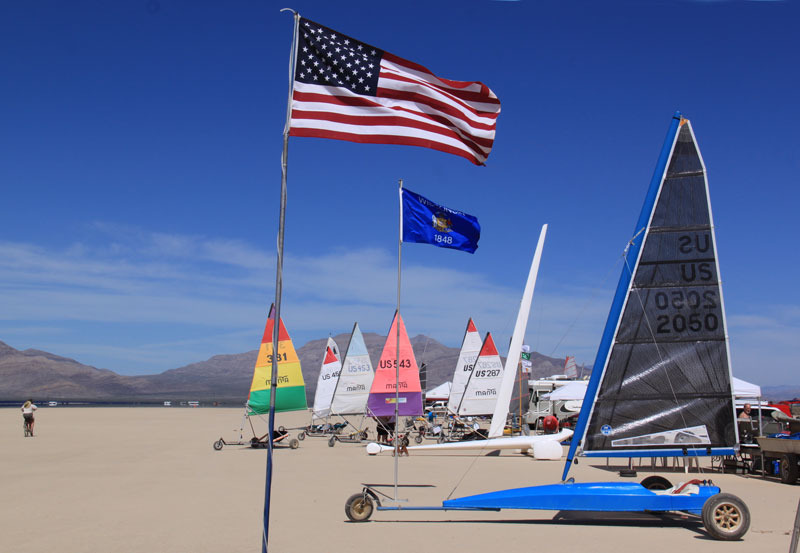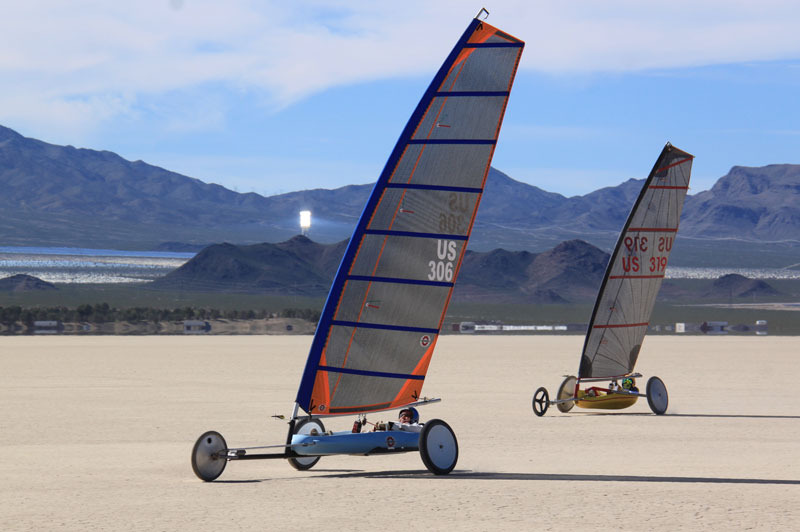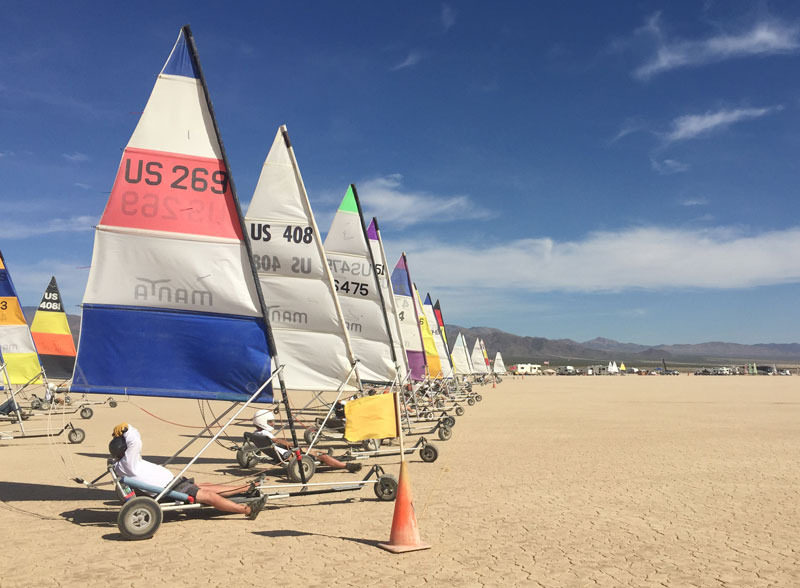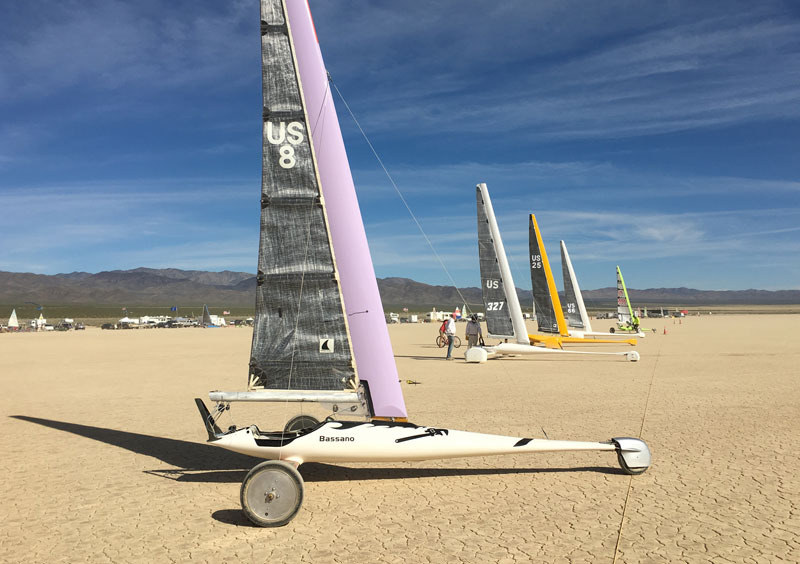
A Rookie at the (NALSA) America’s Cup

As we waited to board our flight at T.F. Green airport, near our home on Narragansett Bay, RI, I felt excited about the adventure that lay before us. My wife and I were on our way to a very different kind of sailing on a dry lake bed in the Mojave Desert at the 45th annual North American Land Sailing Association’s America’s Cup on March 19-25. We were invited to experience ‘dirt boating’ by Dave and Kathy Moeller, members of SASSASS (Sunny Acres Sipping, Sailing and Soaring Society), one of the regional land-sailing clubs that make up NALSA. The Moellers have been involved in land sailing since the mid-’70s and had filled my head with tales of their adventures. After landing in Las Vegas and picking up a 30-ft motorhome, we headed for Ivanpah, just over the California state line.
I would be sailing in the Manta Twin class. I’d never even touched a land sailer before. Shortly after finding a spot to anchor the Winnebago, we began our introduction to land sailing. Optimal conditions call for winds of 15- 25 knots, and racing is usually called off if gusts over 30 are frequent. Dry lake beds are remarkably smooth. Due to the cracked surface, the wheels make a sound similar to running along a brick walkway.

As I headed off on a close reach, the wind gusted, one of my three wheels was airborne, and I accelerated as if I’d been shot out of a cannon. Racing these boats on wheels can be at times as humbling as it is exhilarating. Picture yourself flying along on a reach at around 40 mph 8-10 inches off the surface of the lake, wondering “How the heck am I supposed to jibe this thing without flipping it over?”
With the goal of getting in as many races as possible, the race committee, led by Dennis Bassano, would set the course and initiate the sequence as soon as the wind was sufficient. We were rewarded with excellent wind almost all week. We raced Sunday through Thursday, and my class, which was the largest, usually got in two to three races each day. All classes except for one begin with a standing start, and the dry lake is big enough to allow for windward/leeward courses to be set with about a mile or so between marks. The Manta Twin class had 35 entries, making for some exciting racing that included more than a few capsizes, with a crash or two thrown in.

The camaraderie and sportsmanship keep many of the sailors coming back year after year. While the largest number of folks there seemed to be from California, we met people from Nevada, Wyoming, Montana, New England and even New Zealand. Word spread quickly that I was a rookie; everyone was quick to offer pointers and suggestions. Competitors offered replacements for broken parts and helped repair others’ boats. Each night, one of the participating clubs hosted dinner, and one night we celebrated the 80th birthday of the NALSA founder, Don Rypinski. Don was featured in a National Geographic television production when he sailed across the Sahara Desert in 1970.
Mary Robertson, president of NALSA, pointed to sportsmanship as one of the big reasons NALSA is still going strong after 45 years. “It’s not to say that the racing is not competitive — it certainly is — but over the years the rules have been fine-tuned to build in as much safety as possible.” The boat on starboard tack does not usually have the right of way as it does on the water, which took getting used to. I spent much of the flight to Las Vegas studying the rules, so that I wouldn’t hinder the other racers.

As I became more comfortable, my competitive nature had me working hard to cross the finish line ahead. I did capsize once but was back in the race so quickly that I had one of my best finishes, and fortunately I didn’t take anyone else down with me!
I was taken by surprise when, early in the week, a few people asked me when I was getting my own boat. I don’t know about that, but there is this regatta called ‘The Holy Gale’…

Neither landsailer in the photo captioned “Racing in the Mini Skeeter class” is a mini skeeter. The blue boat is Burton Grover ‘s converted class 5 promo and the yellow boat is my class 5 (New Zealand Rocket, Fed 5 hybrid). We were probably racing in the NALSA Sportsman Class that day.